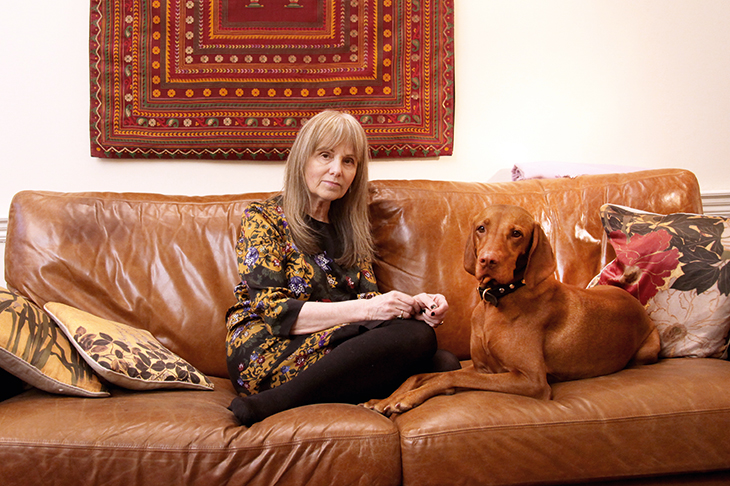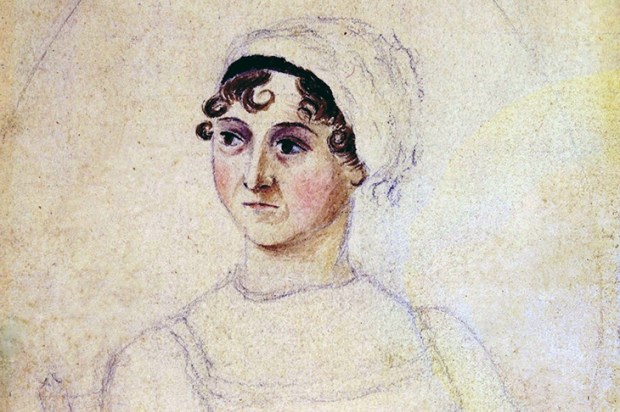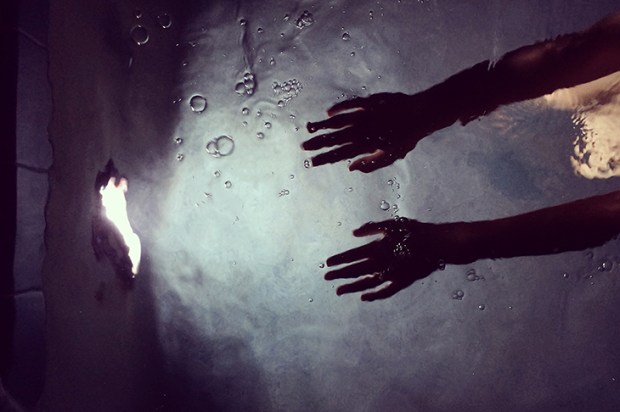‘I have fallen in love many times in my consulting room,’ writes the psychotherapist Jane Haynes. ‘I do not mean that I want to have an explicit sexual relationship,’ she clarifies. That said, she describes herself as the Desdemona of the consulting room, falling in love as she listens to ‘someone share the pity of their history’. And like Othello’s stories that titillated Desdemona, Haynes’s narratives of her and her patients’ painful lives are compelling, if passing strange, particularly given that her profession is usually reticent about what goes on behind closed doors between shrink and shrunken.
Haynes offers her insight into that secret world: ‘They present me with their “lives” just as Salome was presented John the Baptist’s head on a golden platter.’ Perhaps don’t stress that to prospective patients, eh? Therapists aren’t supposed to write like this. They’re not meant to be seduced by clients’ narratives. And they aren’t supposed to be quite so discombobulatingly gabby in print.
Freud, after all, insisted that the analyst must remain a blank slate in order to facilitate the transference process that he took to be essential to psychoanalysis’s talking cure. Haynes and many other therapists don’t hold with this: she follows Freud’s disciple-turned-critic Sándor Ferenczi, who thought analyst and analysand should be co-participants in what Haynes calls ‘the healing encounter by the creation of a symmetrical dyad’.
But there’s a problem with this. The dyad is never symmetrical — not least because no analyst has ever paid an analysand at the end of a session, so far as I know. Indeed, Haynes points out that ‘long therapy can be the monthly equivalent to a short-term mortgage’, though she admits to ‘fee structuring’ for poorer patients. No matter: her brand of relational psychotherapy, following Ferenczi, holds that ‘self-disclosure of the analyst could be an important reparative force’.
Haynes broke the secular confessional’s seal ten years ago with her first volume of memoirs — admittedly only after clients read and approved what she planned to publish, but still outraging colleagues who one easily imagines flinging scatter cushions around north London couches in exasperation. In that book, Who Is It That Can Tell Me Who I Am? (she has a thing about Shakespeare: her first book’s title was King Lear’s question; the new book’s comes from Henry VIII’s wail about his dad), Haynes wrote about a patient she called Miss Suicide. After cancelling a session, Miss Suicide bought some whisky and paracetamol, checked into a Holiday Inn, took the pills and booze and pulled a plastic bag over her head. A passing chambermaid saved Miss Suicide’s life.
Haynes transcribed the dyad’s subsequent conversation. Haynes: ‘I knew that you had put a plastic bag over your head but [laughing] I didn’t know it was a Tesco shopping bag!’ ‘Yes, it was, it was!’ replies Miss Suicide. ‘I hadn’t premeditated it. You see, it was to hand and I thought, well, just to make sure.’
In the book she tells Miss Suicide, honestly if brusquely: ‘I didn’t have a burning desire to save you… there had already been too many failures for that, and it would have been hubris on my part to think I could become your saviour.’ Later, Miss Suicide became, along with several other former patients, a guest at Haynes’s dinner parties, some of them Proust-themed. I yearn for an invitation, and picture myself entering twirling my moustache with top hat, cane and reputation for licentiousness as the Baron de Charlus.
That memoir became the only self-published book to be shortlisted for the PEN/Ackerley award for autobiography. Now Quartet is publishing a new volume. Miss Suicide doesn’t reappear (hope she’s OK, concerned face), but Haynes has a cast of characters a novelist would enjoy juggling. There’s the Pianist, whose ‘tyrannical perfectionism meant that nobody had ever witnessed him perform’, but who finally brings tapes of his playing for the enchanted Haynes to hear. There’s the Professor, who leaves his sexless marriage for a ‘Dionysian carnival of flagrant desire and unaccustomed international extravagance’ with a post-doctoral European research student called the Scarlet Woman. After marrying him, she mutates into la belle dame sans merci and abandons him, leading him to lick his wounds with a third wife. There’s the New Yorker who flies in for a week of intense therapy after one of his twin sons takes his own life, and he’s further traumatised by being unexpectedly exposed to a forensic investigator’s iPhone images of the death scene.
One character, an eminent QC, sees Haynes for three years but ultimately she admits defeat: a new drug regime rather than therapy ameliorates his lifelong depression. It’s hard not to admire Haynes for confessing her failures — in this admission, as in others in this memoir, she goes where her peers fear to tread.
Near the end she reports that some patients have been disappointed not to find themselves written up in her books, assuming that ‘their lives are too bland to have left any mark’. I imagine her giving them proof copies, adding: ‘Sadly, your story didn’t make the cut. How does that make you feel?’
Haynes also mines her own life for copy. As a girl, she was abandoned by her mother, who was sectioned and given ECT after a nervous breakdown, and raised, albeit briefly, by a father dying of syphilis, who ultimately suffered what doctors called ‘general paralysis of the insane’. She became an actress but had an epiphany after reading R.D. Laing’s The Divided Self and trained as a therapist. Soon she was taking LSD with her charismatic Glaswegian mentor in front of her young children, reading erotic poetry at counter-cultural 1960s night clubs, and in raptures over Laing’s playing of Scriabin. In one memorable scene, Haynes is transfixed as the cross-legged guru, a kind of upscale but equally libidinous Austin Powers, asks: ‘Whose womb would you be born from?’ The question inspires Haynes to reflect on what her mum did to her and what she in turn did to her two children, with conclusions familiar to readers of Philip Larkin.
The book is as engagingly digressive as a Ronnie Corbett monologue, and Knausgaardian in its mash-up of the literary and the personal (a chapter on Proust follows a painful meditation on her apparently incurable irritable bowel syndrome). But it’s rather undone by dustjacket encomia. Matt Lucas (foil to David Walliams in Little Britain) praises her writing. And we learn from the blurb that the Blue Door practice in Marylebone which Haynes runs with her daughter Tanya was ‘hailed by Tatler as one of London’s most prestigious private practices’. Is ‘prestige’ what one wants from such a consultancy? And if so, why?
Not for the first time, Haynes’s judgment seems questionable. Indeed, the wisest remark in this thoroughly entertaining book comes from someone else, the Freudian analyst Adam Phillips. ‘People organise their lives to avoid the imagined catastrophe of certain conversations; and they come into analysis, however fluent they may be, because they are unable to speak.’ Haynes, who quotes this with approval, sees her job similarly: as encouraging her patients to talk about the unspeakable.
Once, while I was interviewing Haynes a few years ago in her St John’s Wood consulting room, her phone rang. ‘Don’t worry, be happy,’ went the ring tone. As this book shows, there’s so much more to therapy than that.
Got something to add? Join the discussion and comment below.
Get 10 issues for just $10
Subscribe to The Spectator Australia today for the next 10 magazine issues, plus full online access, for just $10.
You might disagree with half of it, but you’ll enjoy reading all of it. Try your first month for free, then just $2 a week for the remainder of your first year.





![[Credit: Julie Edwards]](https://www.spectator.com.au/wp-content/uploads/2018/10/Mark_Kermode.jpg?w=620)
![[Getty]](https://www.spectator.com.au/wp-content/uploads/2018/10/DNA_pic.jpg?w=620)







Comments
Don't miss out
Join the conversation with other Spectator Australia readers. Subscribe to leave a comment.
SUBSCRIBEAlready a subscriber? Log in